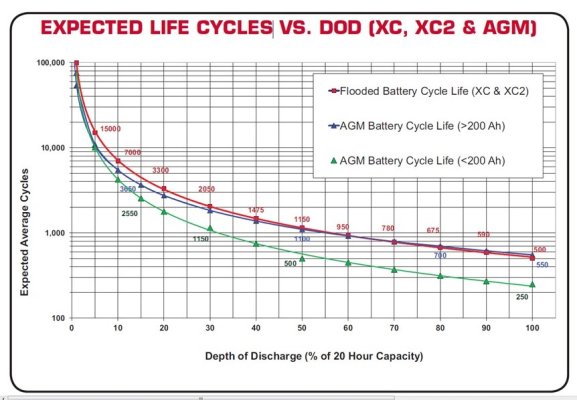Hi All, it's time to replace (and up-size) my house bank. I have my amp draw computation per 24-hours, but what I need to know is what formula to use so that I'm left with say, 60% state of charge at the end of that 24-hour cycle.
Thanks for all help

More importantly, how are you going to recharge?
You have to come up to 90-100% soc which can take up to 7 hours!
No matter what size your bank, if it not charged to 100% every few days your bank will fail prematurely.
Ideally daily amp draw x 4= bank size
FLA batteries can only be charged so fast, it takes time.
AGM and others can be charged faster. (And discharged more deeply)
Charger should be 15% of bank size 500ah bank = 75 amp charger. To give proper 3 stage charging (bulk, absorption and float)
Bigger charger doesn’t mean faster charge (can’t cheat time) FLA bank.
If you don’t have access to shore power you’ll be running gen set ALOT (and most of the time not properly loaded)
Solution is properly sized bank, charger, and solar panels.
My setup is 950ah deep cycle
130 amp smart charger
780 watts solar.
Most days (overnite I’ll use 150-225ah) yes I have ice maker, lights, fridge,TV, etc.
Run Gen 1 hour in am (Takes care of bulk and goes into absorbtion )
Solar takes care of the rest.
The less the discharge (I shoot for 25%) the longer the life of the bank, but it still must be charged for it to last. (Look up Trojan Batteries website)
I once trashed a 500ah bank in 3 months at anchor with a 100 amp charger, because of not enough charging time.
Long rant, some will disagree (and probably much smarter than I am)
But this works for me!
5yrs same bank no deterioration so far


